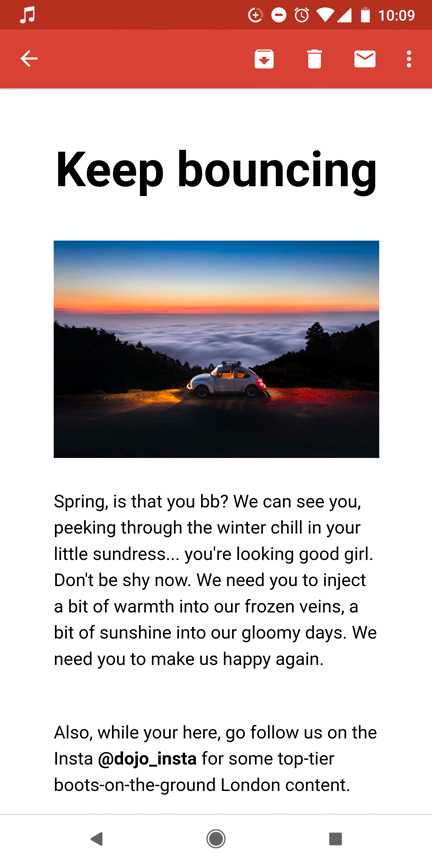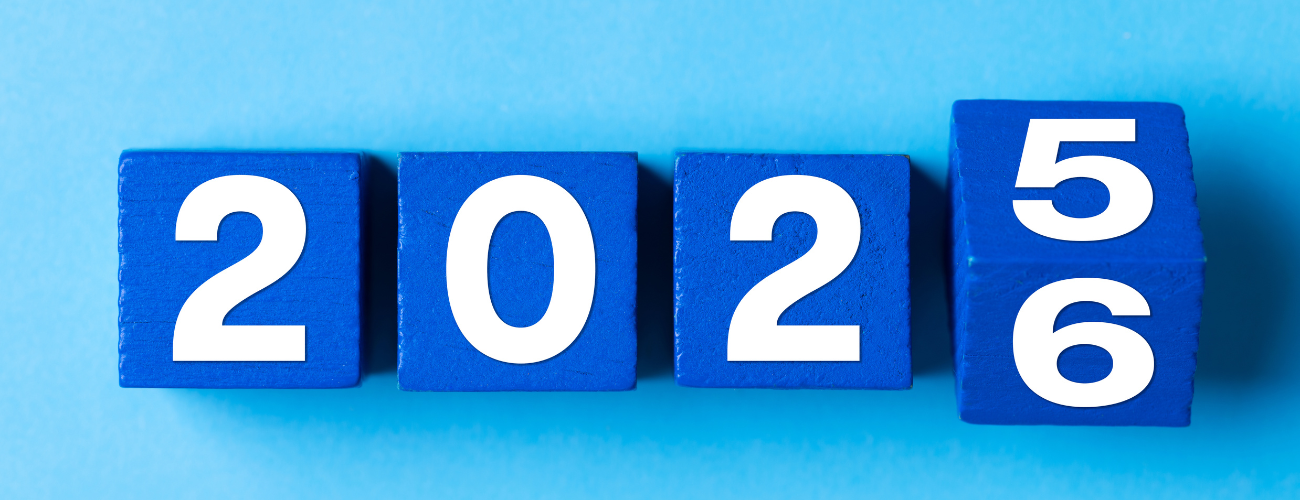Seasonal app marketing and trends play a pivotal role in app marketing, shaping how users engage with and remain loyal to your app. When we talk about seasonality, we’re not referring to apps that are relevant at certain times of the year (like ski resort or festival apps). Instead, we mean the broader patterns, from global holidays like Black Friday and Christmas to religious moments like Diwali or Ramadan and even shifts in weather or lifestyle that influence user behaviour. There are boundless opportunities to drive installs, boost retention, and maximise revenue over the year, and by aligning your acquisition and engagement strategies with these seasonal events, you can unlock growth and long-term loyalty.
Examples of seasonal trends
Seasonal moments shape how users interact with apps, from shopping peaks to sports finals and cultural holidays, creating opportunities for growth across many verticals.
In retail and e-commerce, events such as Black Friday, Cyber Monday, Singles’ Day, and Amazon Prime Day remain some of the biggest global drivers of app downloads and engagement. Cultural and religious celebrations like Diwali, Ramadan, and Lunar New Year also open opportunities for creative campaigns that cut across retail, gifting, food delivery, and more. Meanwhile, the wellness sector experiences predictable surges each January as users commit to New Year’s resolutions.
In the travel sector, flexible and remote work have boosted demand for off-season getaways, giving booking and travel apps fresh opportunities beyond traditional peak seasons. Major sporting events such as Wimbledon, the Super Bowl, and the Tour de France also fuel engagement for streaming, betting, and food delivery apps.
Weather-driven demand is becoming increasingly relevant, too. Colder months often boost engagement with streaming and gaming apps, while heatwaves drive higher adoption of outdoor, fitness, and mobility platforms. Understanding and anticipating these patterns allows marketers to act proactively, not reactively, when it comes to app seasonality.
Brands that plan ahead for these moments, rather than reacting after the fact, will be best placed to capture and sustain engagement across the full calendar year.
Put the user first in seasonal app marketing planning
Seasonal app marketing isn’t just about the timings of your campaigns; it’s about understanding who you’re speaking to and why those moments matter to them.
To achieve this, you need to build up your audience data – their behaviours, preferences and motivations. To plan effectively, we would recommend you start by analysing three key data points:
1. Demographic data – who your users are: age, gender, location, income. This will help you understand the audience segments most likely to engage during specific moments. and
2. Psychographic insights – what motivates them: interests, attitudes and lifestyle choices that reveal how users connect emotionally to certain events or periods.
3. Behavioural insights – how they act; in-app actions, purchase patterns, and engagement peaks around seasonal triggers
Modern app analytics platforms now use AI to surface these patterns in real-time. By setting up custom events that capture actions aligned with seasonal triggers, you can segment audiences by motive and opportunity, ensuring that every campaign aligns with real user behaviour.
Plus, with CRM automation tools like Braze, seasonal marketing has become even smarter. Push notifications, for example, can be sent during a key shopping event to ensure engagement happens at exactly the right moment.
Using custom events for insights
Setting up custom events helps you capture the behaviours that matter most, from browsing seasonal products to reactivating dormant users. This provides a clearer picture of user profiles and makes it easier to build personalised communication strategies that drive engagement.
Once you understand your audience, you can use seasonal moments to deliver personalised, timely campaigns that enhance engagement.
For example, language learning apps like Duolingo tap into the New Year’s motivation to learn a new language by offering discounts on their Super Duolingo subscription. But it’s not just about timing. Duolingo uses custom events and behavioural signals to identify users who have previously shown high intent (like completing multiple lessons or revisiting streak challenges). These insights allow them to trigger targeted offers and motivational messages just as user interest peaks in early January.
Beyond paid promotions, Duolingo also leverages seasonal campaigns to reinforce long-term engagement. Their “New Year, New Streak” challenges encourage users to maintain daily learning habits, rewarding progress with badges and limited-time in-app rewards. By aligning product features, notifications, and creative messaging around seasonal intent, Duolingo transforms a short-term engagement window into sustained user retention, showing how data-driven seasonality can create real, lasting growth.

Similarly, fitness-focused apps like Strava use custom events and seasonal triggers to reignite activity after quieter winter months. Each spring, Strava launches community challenges and competitions, such as monthly mileage goals and location-based races, to inspire users to get outdoors as the weather improves. These campaigns are supported by real-time behavioural data, allowing Strava to segment users by activity level and send tailored prompts or rewards that match their fitness goals.
For example, a user who hasn’t logged an activity since December might receive a motivational push notification like “Spring is here, ready to restart your running streak?” paired with a limited-time challenge badge. Meanwhile, highly active users might be encouraged to compete in global leaderboards or unlock exclusive rewards. By aligning seasonal moments with in-app events and community-driven engagement, Strava keeps its user base active, connected, and motivated year-round.
Together, these examples show how seasonal insights powered by custom events can help apps blend data, creativity, and timing to drive meaningful engagement long after the initial campaign ends.

Stay ahead of seasonal trends
To keep campaigns effective, marketers must track not just predictable peaks but also unexpected triggers. Market intelligence platforms like data.ai, Sensor Tower, and Adjust[AS1] now integrate AI-powered dashboards that combine seasonality insights with creative and spend optimisation tools. Now integrate AI-powered dashboards that combine seasonality insights with creative and spend optimisation tools.
The most successful brands balance forward planning for major events, such as Black Friday or Christmas, with agility when new opportunities arise, whether that’s extreme weather, cultural moments, or viral trends.
A great example is Dojo, the city discovery app. After a long, cold UK winter in 2025, they quickly activated a campaign encouraging users to get outside and explore as soon as the weather improved. By reacting swiftly to real-world change, Dojo drove timely engagement and positioned itself as a relevant part of users’ daily lives.
Creative automation is also transforming how quickly marketers can react to these moments. Generative AI tools now allow teams to produce and test multiple ad variations instantly, adapting copy, visuals, and tone to reflect local weather, events, or cultural shifts without heavy design cycles.

Align your media spend with seasonal demand
Getting your timing and investment right is key to maximising the impact of your seasonal campaigns. Whether your budget is large or small, smart allocation of spending where and when it will drive the greatest return is what turns seasonal moments into growth opportunities.
During high-intent periods, even a modest increase in ad spend can go further, helping you capture users when they’re most engaged and likely to convert. For smaller teams, that could mean boosting spend on your best-performing channels during key events like Black Friday or Valentine’s Day. For larger brands, it might involve layering in new formats such as influencer collaborations, Connected TV, or paid search to reach new audiences at scale.
Once you’ve identified your key seasonal peaks and channel mix, data can help fine-tune performance. Predictive analytics is now enabling marketers of all sizes to make smarter spend decisions throughout the year, highlighting where demand is likely to rise and when to hold back.
To bring this to life, dynamic creative optimisation (DCO) tools automatically tailor ads to the audience, season, or performance trend, delivering personalised creative at scale. Generative AI has made this even more powerful, allowing ad platforms to instantly adjust visuals, copy, and targeting in real time based on what’s performing best.
Measuring the impact of seasonal campaigns
Seasonal strategies only deliver long-term value when their impact is measured effectively. While campaigns often produce visible spikes in installs, downloads alone don’t tell the full story. Retention rates show whether users acquired during peak periods stick around once the moment passes, while engagement metrics (like session length, feature adoption, or in-app purchases) reveal how deeply these users interact with your app.
It’s also essential to test seasonal creatives and offers against evergreen messaging. For instance, an app store page updated with seasonal keywords and visuals might drive more downloads, but marketers should assess whether those users deliver meaningful long-term value. Here, lifetime value (LTV) becomes a key measure of whether seasonal cohorts contribute to sustained revenue.
On the acquisition side, breaking down ROI by channel helps ensure your seasonal media spend is directed towards platforms generating the strongest results. Combining these insights into post-campaign analysis allows marketers to prove the impact of seasonal strategies and build a stronger foundation for the next cycle.
With Apple’s SKAN 4.0 and Google’s Privacy Sandbox rolling out, measuring seasonal performance requires a privacy-first mindset. Adopting aggregated and probabilistic attribution models allows marketers to maintain insight into campaign effectiveness while respecting evolving data regulations.
Final thoughts
Seasonal events don’t just create short-term spikes; they’re powerful opportunities to reignite engagement, boost loyalty, and sustain growth all year long.
By combining deep user insights, agile CRM, smart media spend, and real-time market intelligence, app marketers can capture seasonal demand while building long-term success.
Looking ahead, AI-driven analytics, privacy-compliant targeting, and creative automation will increasingly shape how marketers approach seasonal planning. By blending predictive insights with authentic user engagement, app marketers can transform each seasonal moment into a foundation for lasting growth.
Get in touch with our team to discover how we can help you build a data-driven seasonal campaign that drives long-term app growth.







